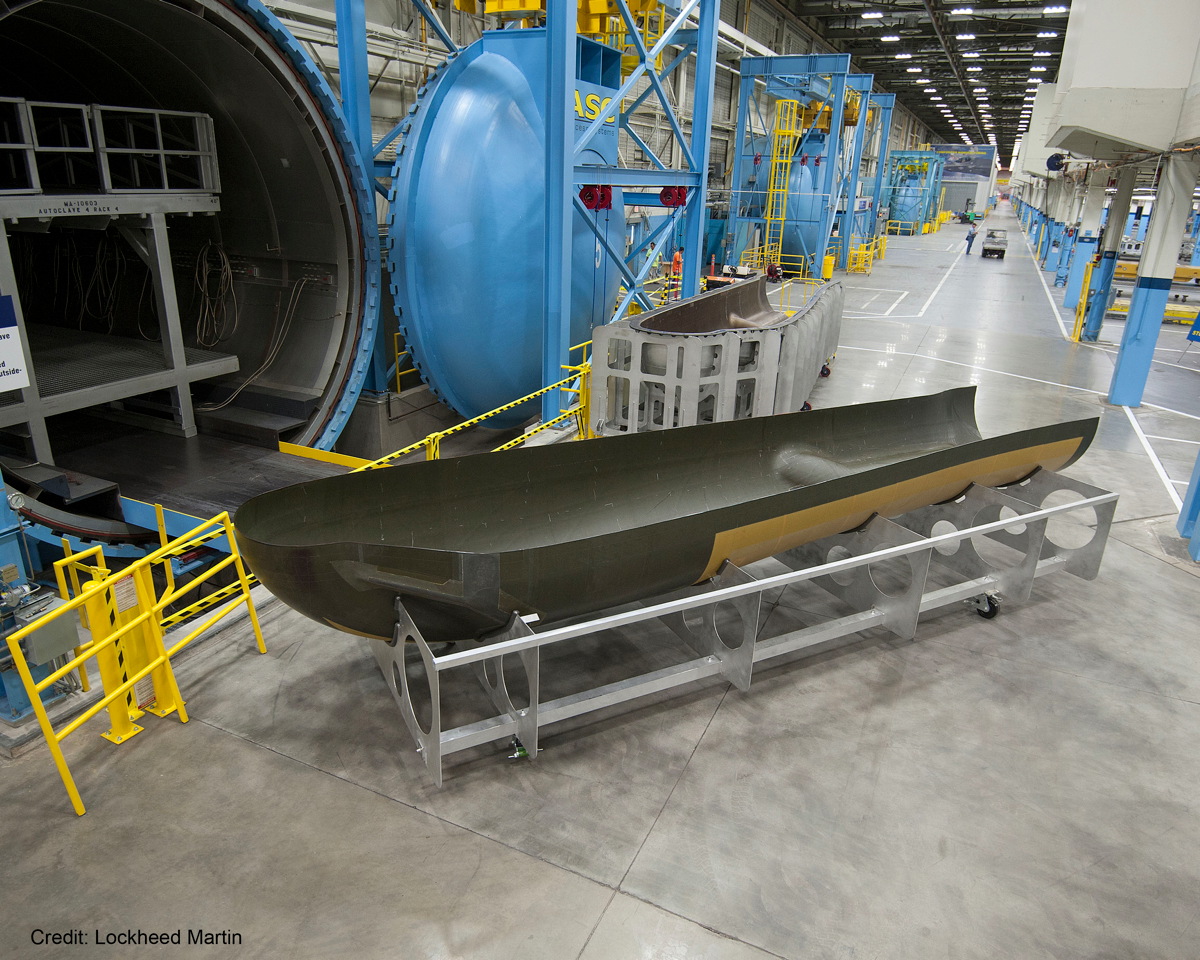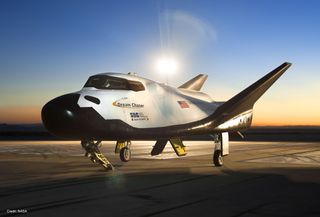First Piece of Private Dream Chaser Space Plane Unveiled

The world has gotten its first look at the body of a space plane due to launch into orbit in 2016.
The composite airframe of Sierra Nevada Corporation's Dream Chaser space plane, which is designed to carry astronauts into space, was revealed on Aug. 1. The structure will be used in Dream Chaser's first orbital test flight, which is scheduled for November 2016, SNC representatives said.
"We are able to tailor our best manufacturing processes, and our innovative technology from across the corporation to fit the needs of the Dream Chaser program," Jim Crocker, vice president of Lockheed Martin’s space systems company civil space line of business, said in a statement. [Photos: Dream Chaser, a Private Space Plane]
Lockheed Martin builds Dream Chaser's airframe for Sierra Nevada. Lockheed began manufacturing the structure earlier this year at the Michoud Assembly Facility in Louisiana, which is a part of NASA's Marshall Space Flight Center. Assembly is taking place at a Lockheed facility in Fort Worth, Texas.
Sierra Nevada hopes that NASA chooses Dream Chaser to ferry its astronauts to and from the International Space Station, beginning in 2017. The agency is encouraging the development of private American astronaut taxis to fill the shoes of the space shuttle, which retired in 2011.
SNC is receiving money from NASA under an agency Commercial Crew Integrated Capability (CCiCap) agreement, and so far has 92 percent of the funds promised.
Later this year, NASA is expected to announce the next stage of funding in the commercial crew program. It is unclear if all three participating funded companies (which also include Boeing and SpaceX) will receive money at that stage.
Get the Space.com Newsletter
Breaking space news, the latest updates on rocket launches, skywatching events and more!
In late July, SNC also announced that Dream Chaser had passed several major systems tests, and that it had signed two agreements for educational and technological projects related to the spacecraft.
The Nevada-based firm has finished risk reduction and technology readiness testing on systems for the crew, environmental control and life support, structures and thermal control and protection. This comes about a month after Sierra Nevada finished other tests on its propulsion and reaction control systems.

Systems were put through their paces in a variety of ways. For example, engineers conducted 1,500 stress tests on the structure and 350 tests to find out which thermal protection system would best protect astronauts as the spacecraft goes through Earth's atmosphere during re-entry, company representatives said.
Testing was conducted at several facilities, including NASA's Ames Research Center in California, NASA's Langley Research Center in Virginia, Michoud, SNC's space systems headquarters in Colorado, and Orbital Technologies Corp. in Wisconsin.
In late July, Sierra Nevada also signed agreements with Tuskegee University in Alabama and the Japanese Aerospace Exploration Agency (JAXA).
The Tuskegee agreement will make the university an educational partner with SNC. Students will work in company facilities through internships, officials with the company will do lectures and curriculum advising, and researchers at the university will join SNC's Dream Chaser program advisory board.
Through the JAXA deal, SNC will investigate the potential use of Japanese technologies in Dream Chaser and discuss possibly launching Dream Chaser from Japan, company representatives said.
Follow Elizabeth Howell @howellspace, or Space.com @Spacedotcom. We're also on Facebook and Google+. Originally published on Space.com.
Join our Space Forums to keep talking space on the latest missions, night sky and more! And if you have a news tip, correction or comment, let us know at: community@space.com.

Elizabeth Howell (she/her), Ph.D., is a staff writer in the spaceflight channel since 2022 covering diversity, education and gaming as well. She was contributing writer for Space.com for 10 years before joining full-time. Elizabeth's reporting includes multiple exclusives with the White House and Office of the Vice-President of the United States, an exclusive conversation with aspiring space tourist (and NSYNC bassist) Lance Bass, speaking several times with the International Space Station, witnessing five human spaceflight launches on two continents, flying parabolic, working inside a spacesuit, and participating in a simulated Mars mission. Her latest book, "Why Am I Taller?", is co-written with astronaut Dave Williams. Elizabeth holds a Ph.D. and M.Sc. in Space Studies from the University of North Dakota, a Bachelor of Journalism from Canada's Carleton University and a Bachelor of History from Canada's Athabasca University. Elizabeth is also a post-secondary instructor in communications and science at several institutions since 2015; her experience includes developing and teaching an astronomy course at Canada's Algonquin College (with Indigenous content as well) to more than 1,000 students since 2020. Elizabeth first got interested in space after watching the movie Apollo 13 in 1996, and still wants to be an astronaut someday. Mastodon: https://qoto.org/@howellspace
